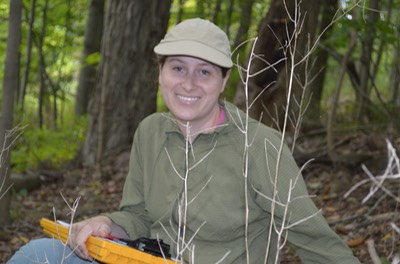Community ecology of native forests of the Eastern United States
I am a broadly trained community ecologist who uses a combination of field and greenhouse studies, mathematical modeling, and literature syntheses to understand which factors shape native forest community structure and ecosystem functioning in a changing world. Particular areas of interest include plant-soil feedback, species invasions, and interactions between food web structure and plant community structure.
My primary goals are to:

1) Determine the role of plant-soil feedback as a driver of forest community structure and ecosystem function.
2) Understand how environmental context, both abiotic (e.g. light, fertility) and biotic (above- and belowground food web structure), influences plant-soil feedback.
3) Identify the role of plant-soil feedback as a driver of species invasions or biotic resistance of communities to invasion.
For more information, check out my publications.
My Background
When I started my research career, I was primarily interested in the way invasive plants used toxic allelochemicals to invade native plant communities, a topic that continues to fascinate me. While collecting seed from the invasive plant garlic mustard (Alliaria petiolata) for an experiment, I noticed that garlic mustard’s fruit structure serves as an ideal substrate for cobweb-building spiders. This observation shifted my view of plant invasions, from a perspective focused on plant-plant and plant-soil interactions, to a broader view that considers the entire food web. I began to explore this interaction and found that garlic mustard promotes elevated spider densities in invaded areas - up to a 14-fold increase compared to native vegetation. Through field experiments, I found that garlic mustard initiates a trophic cascade that decreases insect abundance, increases native plant growth, and even increases the availability of phosphorus in the soil. This led me to examine the influence of aboveground food web structure on plant-soil feedback using mathematical models, through which I found that plant-associated predators can alter the strength and direction of plant-soil feedback and ultimately change the composition of plant communities.
This finding, that aboveground food web structure can alter the role of plant-soil feedback as a driver of plant community structure, continues to motivate my interest in understanding how various biotic and abiotic factors interact with plant-soil feedback.
I am currenty a Postdoctoral Fellow with the National Institute for Mathematical and Biological Synthesis (NIMBioS). For more information on my research, download my CV or feel free to contact me if you have questions.
Visits since 13 September 2015